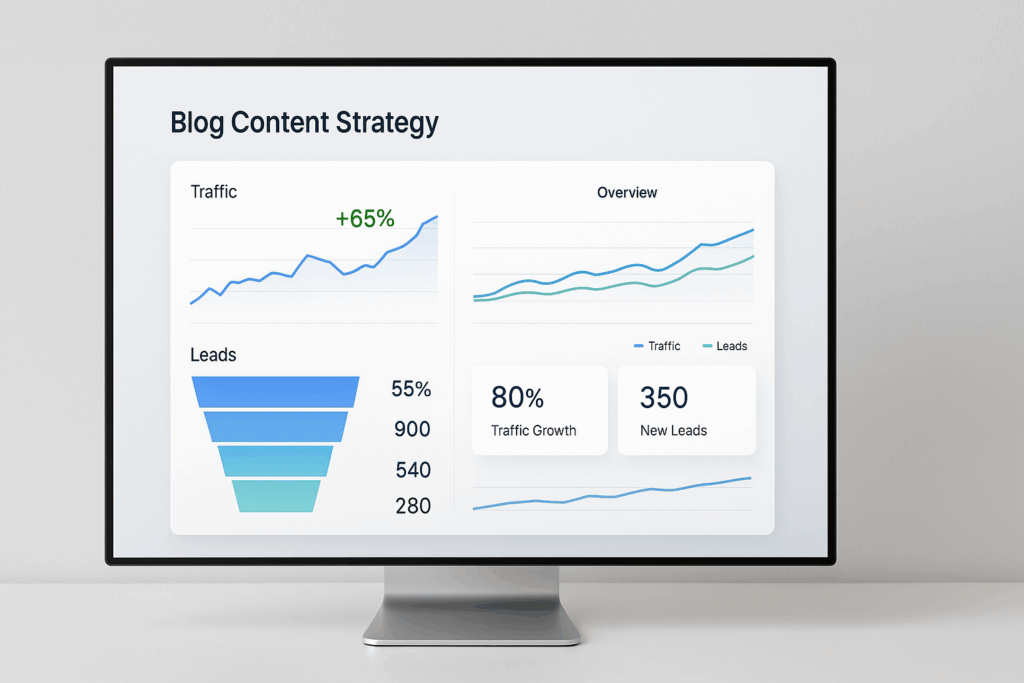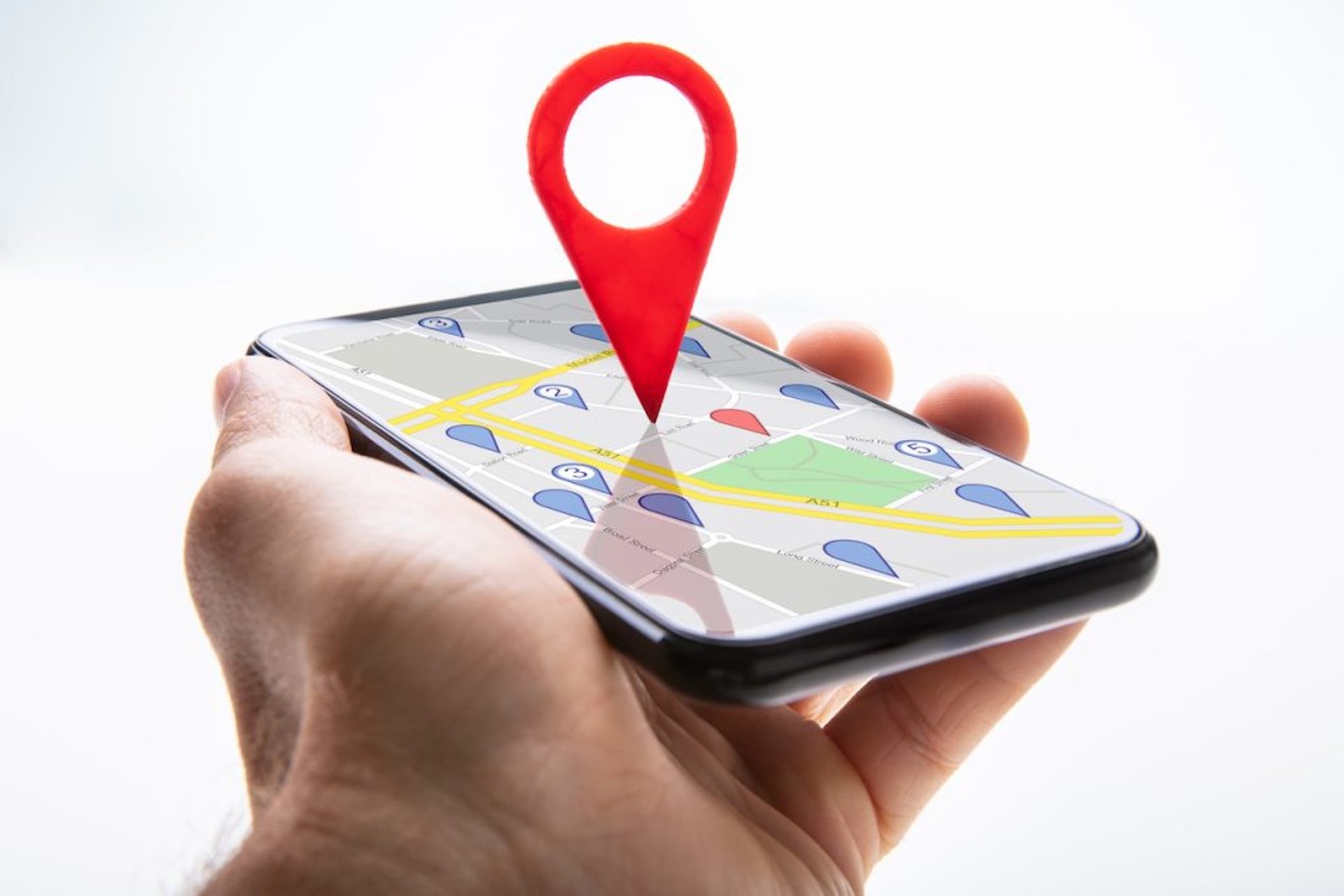Developing a blog content strategy is essential for businesses to get their messaging out to their customers and spread awareness for their brand. Content-rich blogs can also establish authority by demonstrating thought leadership over a subject and help your website rank for keywords with informational and commercial intent that lead customers to your services.
Blogs may seem like an archaic form of media lost to the archives of Tumblr and Medium, but according to recent surveys from 2025, 76% of B2B marketers use blogs as one of their most important lead generation strategies.
Blogging serves a dual purpose in your sales funnel, attracting potential customers and leading them down the path toward conversion. As a result, blogging requires careful keyword and customer research to reach the right people and constant evaluation to improve its impact for your business.
This guide will discuss different blog content strategies to help improve your lead generation strategy, whether you’re a local service-based business or an international e-commerce business.

Why Is Blogging Important for Digital Marketing?
Blogging connects brands to readers, helping them spread their message and demonstrate thought leadership on a subject.
According to Google, half of customers conduct research before making purchasing decisions, and blogs play a critical role in informing customers about potential products and services.
A blog content strategy is especially essential for search engines and artificial intelligence (AI) LLMs (large language models) to discover your website and rank it for informative and commercial queries.
Traffic acquired from platforms like Google’s AI Overview, ChatGPT, and Perplexity will become valuable leads that can turn into real business revenue and lifetime customers.
Blogging can also serve other purposes for your business, including sharing brand updates, highlighting company achievements, showcasing customer success stories, and providing educational content that strengthens relationships with your audience.
By consistently publishing valuable content, blogs keep your brand top-of-mind, foster trust, and create multiple touchpoints that guide potential customers toward conversion.
7 Ways to Improve Your Blog Content Strategy
Writing content is just one small step to refining and improving your blog content strategy for search engine optimization (SEO) and generative engine optimization (GEO).
Here are seven ways to boost your blog content strategy using best practices from our team at ContentMender.
1. Build Customer Avatars
The first step to developing a blog content strategy is to start with customer persona development. Understanding who your readers are and what motivates them is important to creating content that resonates.
Define your customer avatar by asking:
- Who are my ideal readers or customers?
- What problems do they need solved?
- How does my product or service fit into their daily challenges?
- What are their goals, frustrations, and motivations?
- What type of content do they typically engage with (blogs, videos, guides, etc.)?
- Where do they spend time online—Google, LinkedIn, YouTube, or niche communities?
- What level of industry knowledge do they have (beginner, intermediate, expert)?
- What objections or hesitations might they have before choosing my product or service?
Incorporate demographic details into this avatar to refine your messaging for the specific needs of your audience.
This clarity will guide your tone, topics, and calls to action, ensuring every post speaks directly to your target audience and supports your overall business objectives.
2. Conduct Thorough Keyword and Query Analysis
Keywords connect search engines and readers with your content. Identify the informational and commercial queries your customers are searching for, and build your content around those topics.
Use SEO tools like Google Search Console, Ahrefs, or SEMrush to uncover the keywords driving traffic to your site, and the ones your competitors are ranking for.
Pay attention to search intent, as this is important for crafting the appropriate content for your audience:
- Informational queries attract readers looking to learn.
- Commercial queries capture those ready to buy or inquire.
The former is essential for attracting leads and serving as the top of your sales funnel. The latter engages readers to convert them into customers for your business.
3. Complete Competitive Research
Competitive research provides a great baseline for performance standards and keyword ideas you can use to boost your content blog strategy.
Analyze their keyword targets, backlink profiles, and content depth using tools like SEMrush, Ahrefs, or Google Ads.
Identify gaps where your competitors fall short, like outdated information, missing subtopics, or a lack of visual media, and use those gaps to create stronger, more authoritative content.
Staying two steps ahead means continually evolving your strategy and being open to new formats, channels, and topics.
4. Use Analytics to Monitor Campaign Results
Use analytics platforms like Google Analytics, Google Search Console, and HubSpot to monitor performance metrics such as organic traffic, time on page, bounce rate, and conversions. These metrics tell a story of how customers interact with your content and what percentage of these interactions lead to conversions.
Use these insights to make edits and adjustments as content starts to lose traffic, new information becomes available, or search algorithms evolve.
Regularly reviewing user data ensures your blog continues to deliver results and adapt to shifting user behavior.
5. Write with Original Research and Content
Original research builds authority, credibility, and backlinks—three pillars of strong SEO and GEO visibility. Instead of rehashing existing ideas, conduct your own surveys, case studies, or internal data analyses for new insights.
AI-driven tools increasingly prioritize unique, data-backed content. Demonstrating your expertise through firsthand insights signals to both readers and algorithms your thought leadership and builds trust that will compound with time.
Collaborate with an experienced content team that understands your industry and can produce writing that’s accurate, engaging, and aligned with your business goals.
6. Prune and Refine Aging Content
Outdated or irrelevant articles can hurt SEO performance, so schedule regular content audits to review what’s live on your site and prune outdated or incorrect content.
Update older blogs with new data, links, and formatting, or consolidate similar posts into one comprehensive resource. Redirect pages that no longer serve a purpose and remove low-quality content that offers no value.
This process keeps your website clean, relevant, and aligned with modern search and AI ranking standards.
7. Develop an Ongoing Content Calendar
Consistency is key to long-term success. A well-structured content calendar ensures your team stays organized, your topics align with business goals, and your blog posts are published regularly.
Plan seasonal topics, thought leadership pieces, and evergreen posts in advance. Assign roles, set deadlines, and track deliverables. An ongoing calendar not only streamlines your workflow; it also builds momentum with search engines and keeps readers coming back for more.
By treating your content strategy as an ongoing process rather than a one-time project, your business will continually attract, engage, and convert high-quality leads.
Optimizing Blogs for SEO: Best Practices
Optimizing your blog for SEO will ensure your content gets found by the right audience. Search engines like Google reward content that demonstrates Experience, Expertise, Authoritativeness, and Trustworthiness.
The goal is to balance readability for humans with clear signals for search algorithms so that your content appears natural and well-structured.
Here are key SEO best practices for blogs:
- Conduct keyword research: Identify primary and secondary keywords related to your topic, using tools like Google Keyword Planner, Ahrefs, or SEMrush. Focus on search intent and look for opportunities your competitors are not exploring.
- Use keyword placement strategically: Include your main keyword in the title, URL, first paragraph, subheadings (H2s/H3s), and meta description, and follow proper meta tag guidelines.
- Write for readability: Use short paragraphs, bullet points, and clear subheadings. Search engines and AI platforms favor content that’s easy to scan.
- Add internal and external links: Connect readers to related posts on your site and cite authoritative external sources. This boosts both SEO and credibility.
- Optimize media assets: Compress images for fast load times and include keyword-rich alt text to improve accessibility and ranking signals.
- Use schema markup: Add structured data (e.g., Article, How-To, FAQ) so search engines better understand your content.
- Prioritize page speed and mobile optimization: A fast, mobile-friendly blog improves rankings and user experience.
Finally, include a clear call to action (CTA) at the end of each post to guide readers toward the next step, whether that’s scheduling a consultation, subscribing, or downloading a resource.
Optimizing Blogs for Generative Engine Optimization (GEO): Best Practices
Generative AI platforms like Google’s AI Overview (AIO), ChatGPT, Gemini, and Perplexity become integral to how users discover information, blogs must now be optimized for GEO as well as traditional SEO. AI models rely on clarity, structure, and semantic depth to determine whether your content is relevant to a user’s query.
Follow these GEO best practices to ensure your content is AI-discoverable and credible:
- Focus on intent-based writing: Craft content that clearly answers user questions in a conversational tone. AI systems prefer direct, well-organized answers that reflect real human intent.
- Use question-driven headings: Include FAQ-style headings such as “How Does X Work?” or “What Are the Benefits of Y?”—these improve visibility in AI-powered results and voice search.
- Leverage semantic keywords: Include natural language variations and related phrases to give AI models more context about your topic.
- Maintain factual accuracy and citations: AI prioritizes trustworthy, verifiable content. Support claims with statistics, data, and credible sources.
- Structure content for clarity: Use headings, lists, and summaries to make information easy for AI to parse and categorize.
- Include concise summaries and takeaways: AI often extracts content snippets, so clear, structured summaries increase your chances of being referenced or cited.
- Update content regularly: AI tools value freshness and recency. Refresh your articles with new data or insights to maintain topical relevance.
By optimizing for both SEO and GEO, your blogs will reach a wider audience and build more authority.
Developing a content blog strategy is a multi-step process that requires ongoing optimization and revision.
Investing in content production the right way can yield more long-term leads and help increase revenue for your business.
FAQs
1. What is a blog content strategy?
A blog content strategy is a structured plan for creating, publishing, and promoting blog posts that align with your business goals. It combines keyword research, audience targeting, and content planning to attract readers, build authority, and generate leads over time.
2. Why is blogging important for SEO and digital marketing?
Blogging helps improve your website’s visibility in search results, drives organic traffic, and establishes your business as an industry authority. It also creates opportunities for backlinks, keyword rankings, and engagement that contribute to long-term digital marketing success.
3. How often should I publish new blog posts?
Consistency matters more than frequency. Most businesses see strong results by publishing high-quality blog content at least two to four times per month. However, the ideal cadence depends on your resources, goals, and how competitive your industry is.
4. How do I optimize my blog for SEO?
Start by performing keyword research and incorporating your primary keyword into your title, headers, and meta description. Add internal links, optimize images with alt text, use schema markup, and ensure your blog loads quickly on all devices.
5. What does GEO (Generative Engine Optimization) mean for blogs?
GEO focuses on making your content understandable and appealing to AI-driven platforms like ChatGPT, Perplexity, and voice assistants. This includes writing in a clear, conversational tone, answering questions directly, and structuring content so AI tools can extract accurate, context-rich answers.



